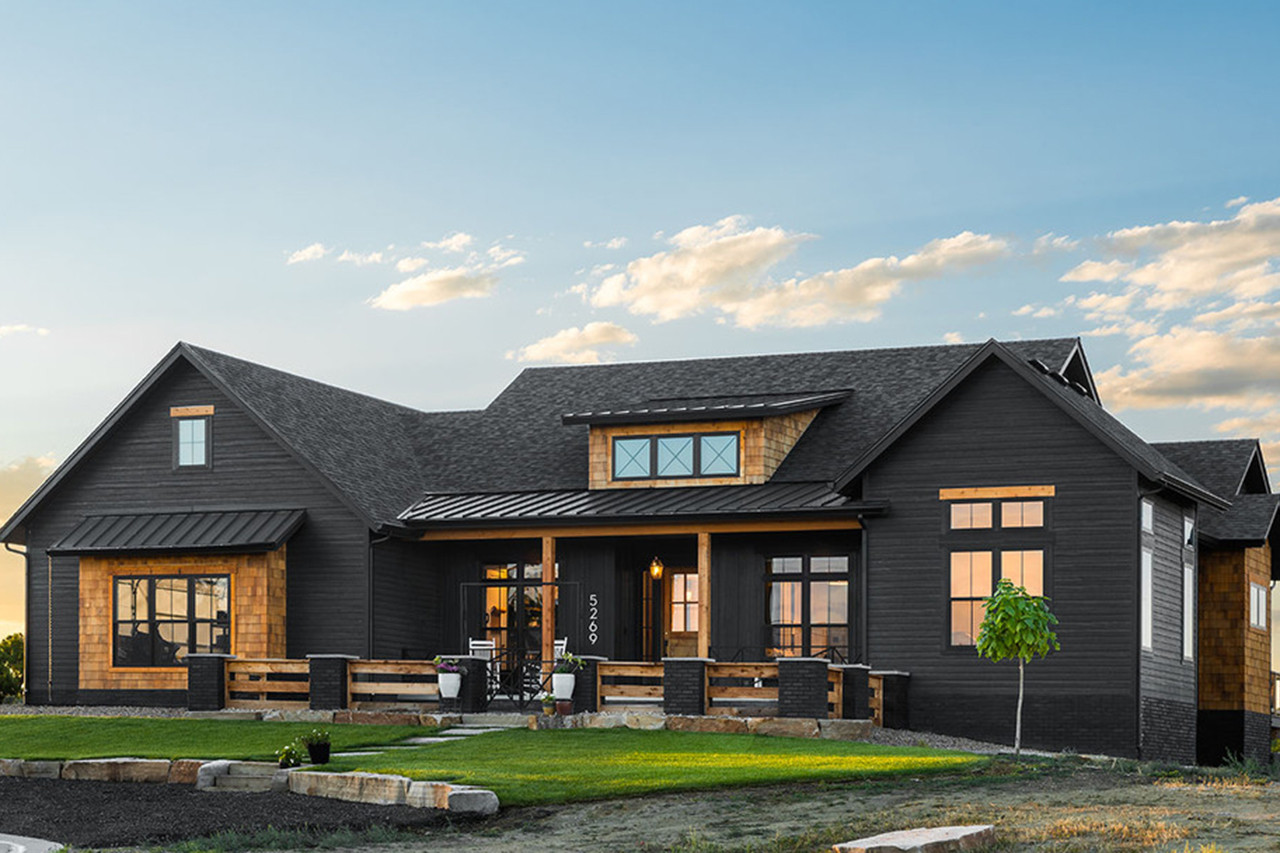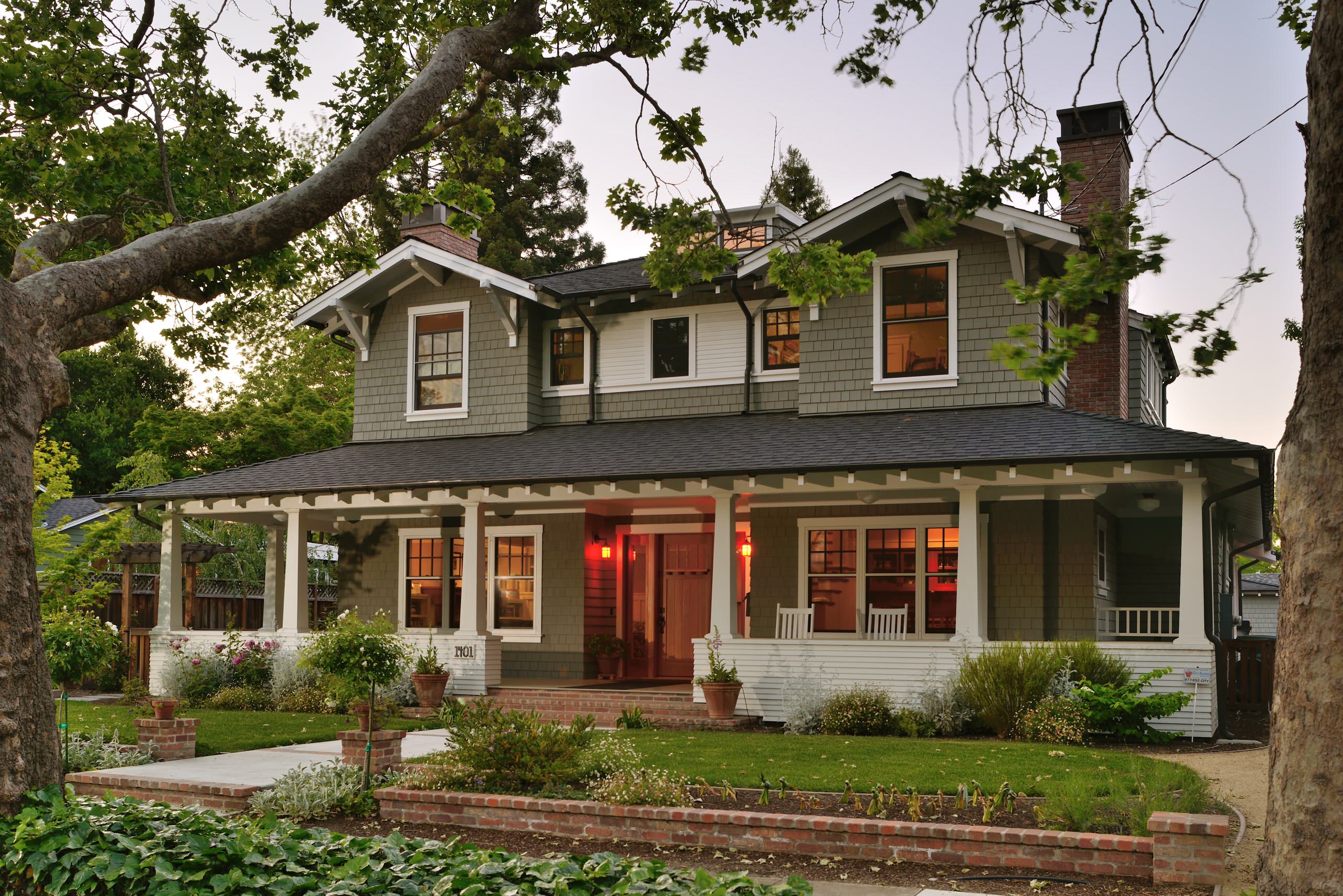Common Concerns About Choosing a craftsman style house
Wiki Article
The Function of Arts & & Crafts Architects in Elevating Architectural Providers in Residential Design
Arts and Crafts architects greatly affect residential style via their commitment to workmanship and sustainability. They focus on handmade details and all-natural materials, which improve both aesthetics and area identification. By involving customers in the layout procedure, these architects produce one-of-a-kind living areas that reverberate with individual tastes. This technique questions concerning the future trajectory of domestic architecture and its potential effect on community characteristics. craftsman style house. What exists ahead for this classic layout viewpoint?
The Concepts of Arts and Crafts Architecture
The essence of Arts and Crafts architecture lies in its dedication to craftsmanship and simpleness. This architectural movement emerged in the late 19th century as a response to industrialization, highlighting the value of handcrafted details and natural materials. The principles of Arts and Crafts architecture focus on performance and harmony with the environment. Structures normally feature low-pitched roofings, broad eaves, and exposed rafters, promoting a feeling of unity with nature.Artisans played a significant function in this design, commonly integrating ornamental elements like stained glass, tiles, and woodwork, which mirror regional craftsmanship. The color scheme has a tendency to be earthy and suppressed, allowing structures to blend flawlessly into their environments. On top of that, the layout motivates open floor strategies and common rooms, fostering a sense of togetherness. Overall, the concepts of Arts and Crafts architecture celebrate the beauty of simplicity and the value of human connection to both nature and community.

Lasting Practices in Residential Style
While the demand for environmentally accountable living remains to expand, lasting methods in property design have gotten substantial grip amongst architects and homeowners alike. Architects are progressively incorporating energy-efficient modern technologies and lasting materials into their layouts, aiming to minimize carbon footprints and improve energy preservation. Approaches such as passive solar style, eco-friendly roofings, and rain harvesting systems are coming to be basic elements of modern property architecture.In addition, the option of locally sourced materials minimizes transport exhausts and supports regional economic situations. Focus on all-natural light and ventilation not just enhances indoor air quality however likewise reduces reliance on artificial lighting and climate control systems. These sustainable methods show a commitment to maintaining the atmosphere while offering house owners with comfy, effective home. As awareness of environmental concerns expands, the combination of sustainability in property layout is poised to become a defining quality of contemporary architecture, guided by the concepts developed by Arts and Crafts architects.
Modification and Personalization in Home Layout
Modification and personalization in home style have actually become crucial patterns in action to the expanding desire for one-of-a-kind living settings that show private preferences and way of lives. Homeowners increasingly look for to tailor spaces that reverberate with their individualities, bring about an extra significant connection with their living spaces. craftsman style house. This motion urges architects to involve clients in the style process, cultivating partnership that guarantees the final result embodies the homeowner's visionComponents such as bespoke layouts, customized materials, and customized finishes enable a varied series of expressions in household design. Arts and Crafts architects play an essential duty in this development, highlighting workmanship and Check This Out quality. Their concentrate on incorporating imaginative elements with capability guarantees that each home is not only aesthetically pleasing but additionally distinctively matched to the occupants' needs. Subsequently, this focus on modification boosts the general property experience, developing rooms that are both personal and enduring.

The Influence of Arts and Crafts Architects on Community Aesthetics
As communities evolve, the impact of Arts and Crafts architects significantly shapes their visual landscape. By emphasizing handmade details, natural products, and standard building and construction methods, these architects create homes that reverberate with their environments. Their styles typically include local vegetations, textures, and colors, cultivating a feeling of consistency between built environments and nature.The Arts and Crafts activity advertises area identification through architectural connection. By urging home owners to embrace similar style principles, neighborhoods develop a cohesive personality that enhances aesthetic allure. This building harmony not just improves the visual experience yet likewise imparts a sense of pride among homeowners.
Additionally, the focus on sustainability and workmanship in Arts and Crafts architecture lines up with modern values, making these styles relevant in contemporary setups. Eventually, Arts and Crafts architects add substantially to the overall charm and cultural honesty of areas, leaving a lasting impact on their aesthetic heritage.

Future Fads in Arts and Crafts Architecture
With an enhancing emphasis on sustainability and customization, future trends in Arts and Crafts architecture are poised to mix traditional craftsmanship with contemporary advancement - craftsman style house. Architects are most likely to prioritize eco-friendly materials, using recovered wood and natural stone to improve the sustainability of domestic designs. The combination of clever home innovation will become widespread, enabling customized living experiences without compromising aesthetic stabilityFurthermore, the rebirth of artisanal techniques will foster a restored appreciation for handcrafted elements, such as bespoke kitchen cabinetry and customized ceramic tile job. Future designs may additionally reflect a focus on community-oriented spaces, encouraging communication and connection amongst residents. Exterior living locations will obtain importance, seamlessly integrating nature into the home setting. As Arts and Crafts architecture advances, it will proceed to honor its helpful resources roots while adapting to contemporary demands, developing unified rooms that mirror specific worths and way of livings.
Regularly Asked Concerns
What Influenced the Arts and Crafts Activity in Architecture?
The Arts and Crafts motion in architecture was inspired by a response versus automation, stressing handcrafted high quality, natural materials, and a go back to typical craftsmanship, intending to develop harmonious, practical areas that commemorated creativity and individuality.Just how Do Arts and Crafts Architects Collaborate With Customers?
Arts and crafts architects collaborate with customers via open dialogue, focusing on individual demands and appearances. They emphasize craftsmanship and sustainability, cultivating a partnership that integrates the client's vision with the architect's experience in style and products.What Materials Are Commonly Made Use Of in Arts and Crafts Homes?
Typical materials in Arts and Crafts homes consist of all-natural wood, rock, and block, highlighting craftsmanship and natural appearances. These components create a warm, inviting moved here ambience, reflecting the movement's commitment to quality and simpleness in layout.Exactly how Do Arts and Crafts Layouts Enhance Indoor Living Rooms?
Arts and Crafts designs boost indoor living areas by promoting all-natural light, open floor strategies, and handcrafted details. These aspects promote a cozy, welcoming atmosphere, urging a link between locals and their atmospheres with thoughtful, functional aesthetics.What Are Some Famous Instances of Arts and Crafts Architecture?
Famous examples of Arts and Crafts architecture consist of the Gamble House, Greene and Greene's work of art in The golden state, and the Robie House by Frank Lloyd Wright. These structures showcase handcrafted details and consistency with nature, specifying the movement's significance.Report this wiki page